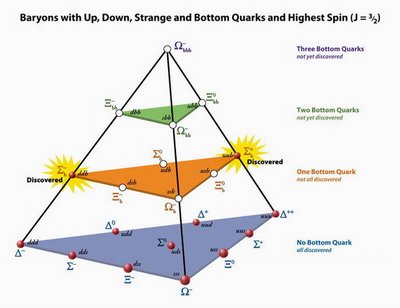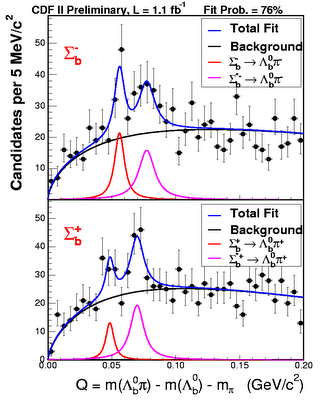Bottom Baryon Discovery
Congratulations to CDF on the discovery of the Sigma_b plus and the Sigma_b minus, the first baryons to contain a bottom (b)-quark.
In addition to the stable up (u) and down (d) quarks, which make up ordinary matter, there exist heavier unstable quarks named strange (s), charm (c), bottom (b) and top (t), which can be combined to make exotic particles that don’t occur naturally in the world around us. The Sigma_b plus (uub) is an exotic relative of the proton (uud), where the bottom quark has replaced the usual down quark. The Sigma_b minus contains a b-quark and two d-quarks, and is a relative of the less well-known Delta minus.

Tomasso has a good post on the discovery, where he shows the graph below of the mass distribution of the Sigma_b candidates they found, and there is also a good explanation of the discovery on the Physorg page, from where I borrowed the above diagram.

In addition to the stable up (u) and down (d) quarks, which make up ordinary matter, there exist heavier unstable quarks named strange (s), charm (c), bottom (b) and top (t), which can be combined to make exotic particles that don’t occur naturally in the world around us. The Sigma_b plus (uub) is an exotic relative of the proton (uud), where the bottom quark has replaced the usual down quark. The Sigma_b minus contains a b-quark and two d-quarks, and is a relative of the less well-known Delta minus.

Tomasso has a good post on the discovery, where he shows the graph below of the mass distribution of the Sigma_b candidates they found, and there is also a good explanation of the discovery on the Physorg page, from where I borrowed the above diagram.




